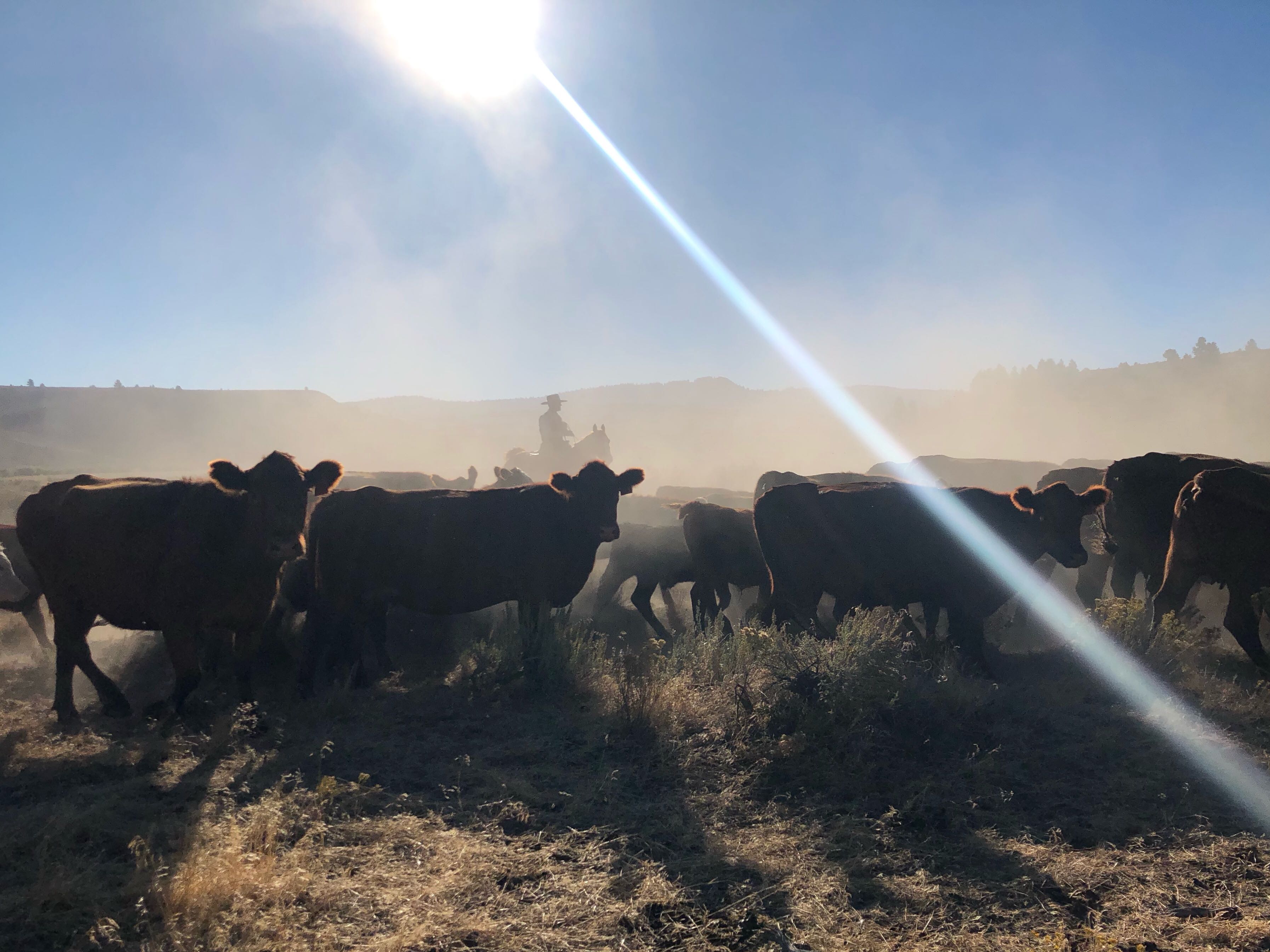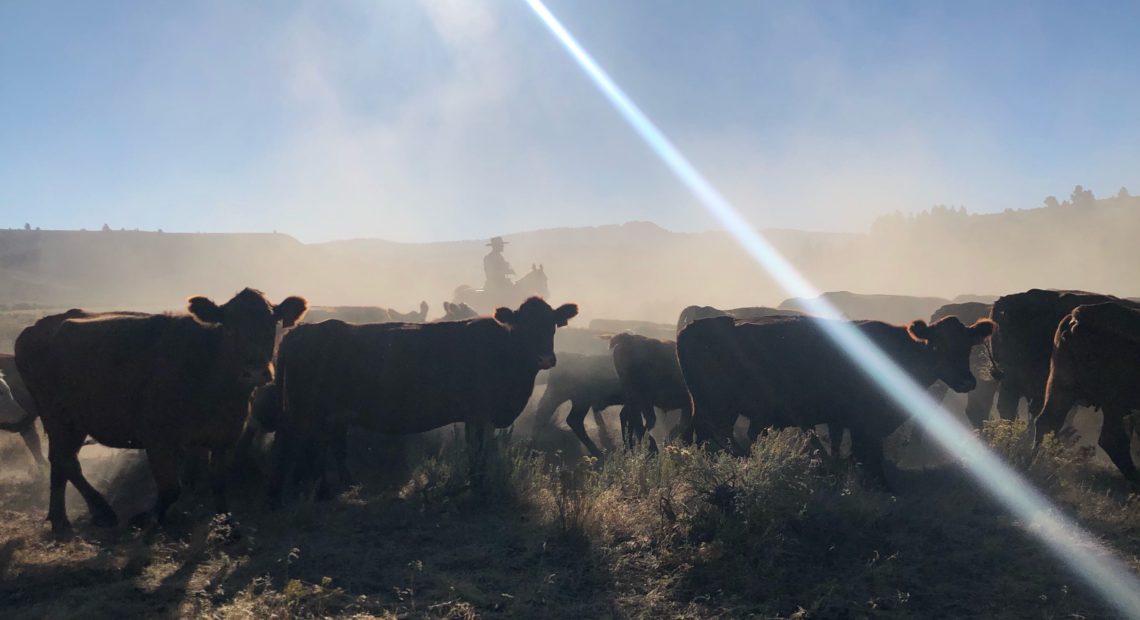
‘Not One Drop Of Blood’: Cattle Are Being Mysteriously Mutilated And Killed In Eastern Oregon
Listen
Outside of Pendleton, Oregon, Terry Anderson’s cattle have messed up his irrigation spigots. Again.
The cows knock them down pretty much daily, and he has to fix ‘em. He jumps out of his side-by-side vehicle and deftly rights them again or screws on a new spigot if they’re really bad.
“Cows just rub on stuff for the heck of it,” Terry Anderson says with a smile. “They love to scratch.”
Not One Drop Of Blood
Right now in remote eastern Oregon, a serial crime spree is unfolding. Young purebred bulls are mysteriously showing up dead. Cowboys recently found several animals with body parts precisely removed — and it’s happened just like this before in the West.
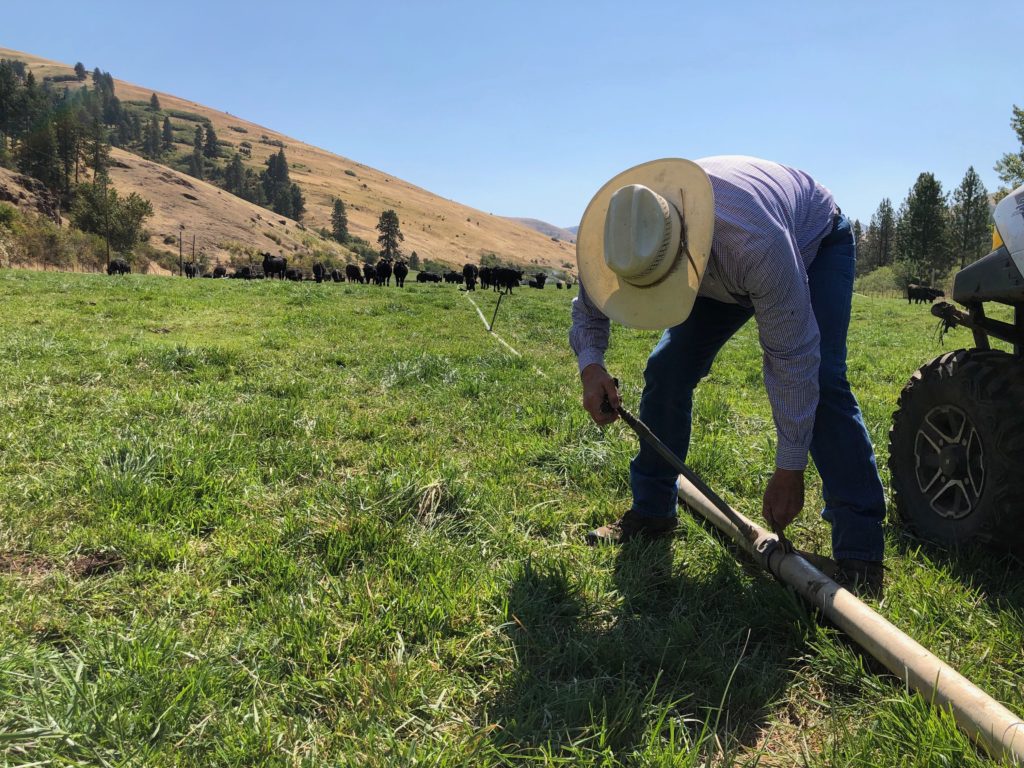
Terry Anderson outside of Pendleton, Oregon, fixes his solid-set irrigation lines. Cows love to rub against the spigots and knock them over, he says. Anderson had a cow mysteriously killed on his place back in the 1980s. CREDIT: ANNA KING/N3
It happened to Anderson back in the 1980s, when one of the rancher’s mother cows was mysteriously killed overnight. From his homeplace, Anderson points to the exact spot where he found her on top of a mountain. He’s never gotten over it.
As he remembers, Anderson says he had just been near the spot the night before. The next morning, his cow was laid over and dead, her udder removed with something razor sharp.
“And not one drop of blood anywhere,” Anderson says.
Leaving Tracks
Over 200 miles away — outside Princeton, Oregon — Andie Davies is canning green chili peppers in her remote ranch kitchen. The air smells spicy, warm. She wipes her strong, working hands before giving a shake.
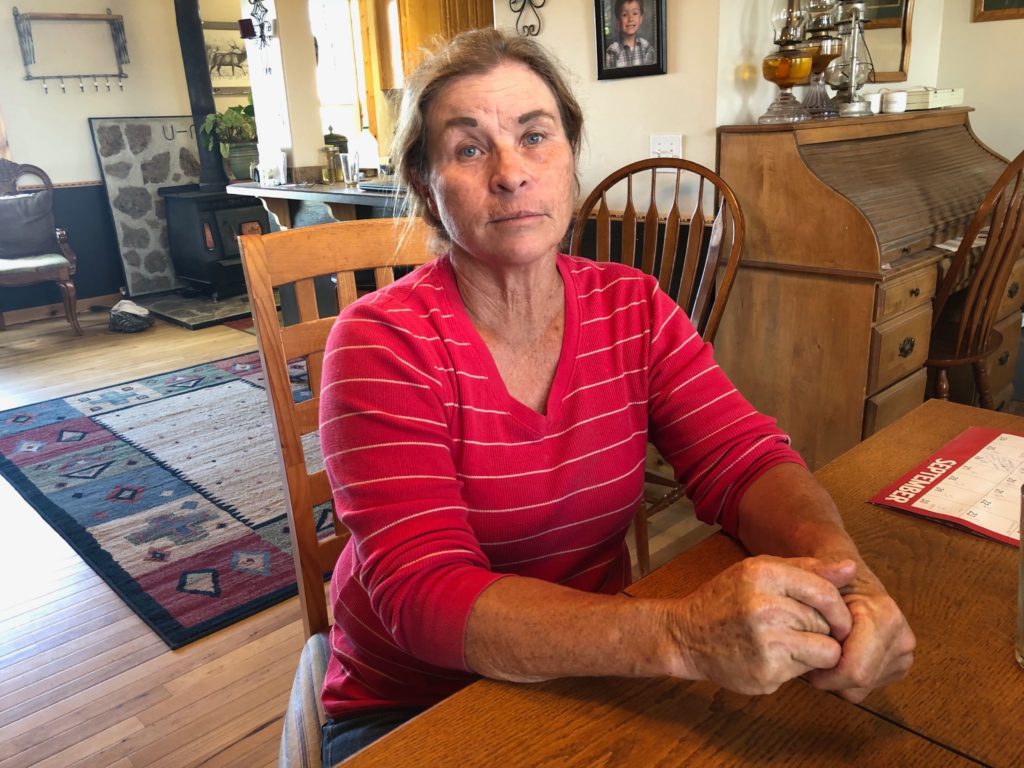
Andie Davies, of Princeton, Oregon, sits at her kitchen table taking a short break from canning chili peppers. Davies and her husband had one of their mother cows killed about two years ago in a mysterious way. CREDIT: ANNA KING/N3
Another cut up and bloodless cow was found two years ago a mile from her homeplace. A hunter discovered the carcass near a water trough, just hours after the kill.
Her son, a butcher at the time, inspected the slain animal. He couldn’t understand how the cuts were made so clean.
Davies says she and her husband rode strategic circles around the area with four wheelers to try and find vehicle tracks, horse tracks, something. They never found any. And in this country, “everything you do leaves tracks,” Davies says.
Silvies Valley Ranch
Over an hour away, north of Burns, cowboys whistle and talk low to eager cattle dogs.
Dust from hooves, both cloven and shod, creates a fog in the early light. As they gather the cow-calf pairs out of a large draw, the animals call to each other.
Silvies Valley Ranch is nearly the size of Chicago. This summer, five young purebred bulls were cut down in their prime. Colby Marshall, is the vice president of the ranch.
To understand better, we rattle up a two-track U.S. Forest Service road.
“And we’re gonna drive in here,” Marshall says, “oh a little ways and then we’ll get out and take a little walk to where one the bulls was found. And the carcass is still there.”
These animals were found bloodless, with their tongues and genitals precisely removed.
Coming upon one of the dead bulls is an eerie scene. The forest is hot and still, apart from a raven’s repeating caw. The bull looks like a deflated plush toy. It smells. Weirdly, there are no signs of buzzards, coyotes or other scavengers. His red coat is as shiny as if he was going to the fair.
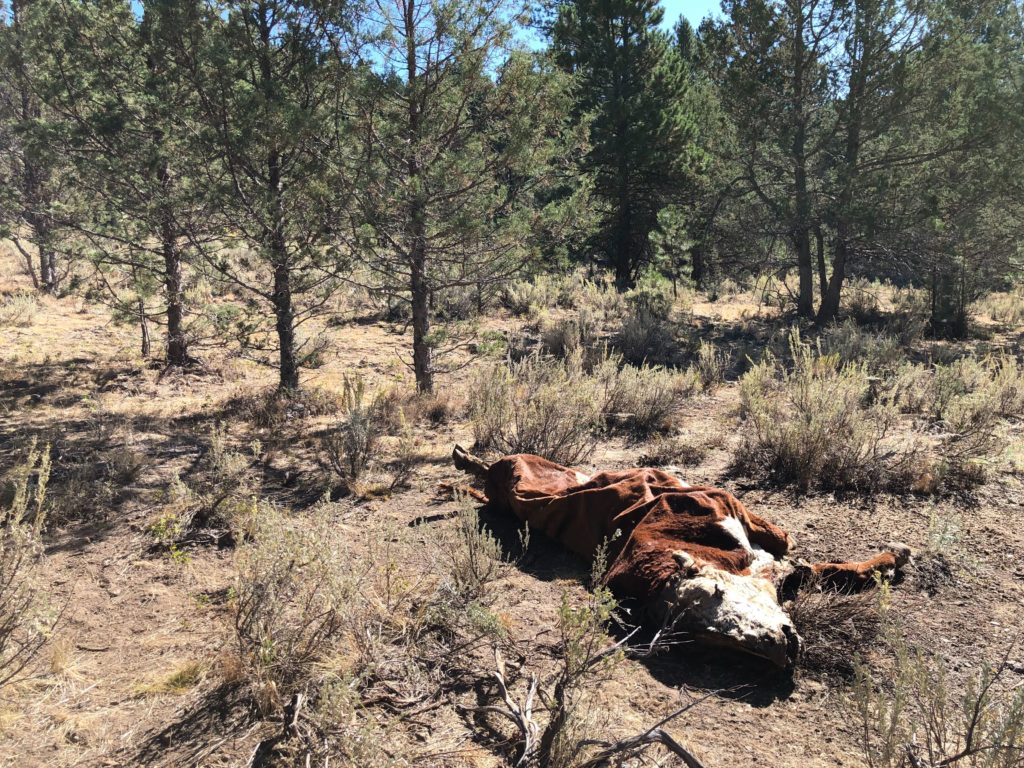
The crumpled carcass of a once vibrant bull lays on Forest Service ground. It was killed along with several others in a strange way at Silvies Valley Ranch in eastern Oregon, and detectives have few leads. CREDIT: ANNA KING/N3
Marshall says these young animals were just reaching their top value as breeding bulls. Now the animals worth as much as $7,000 dollars each, and their collective future progeny worth hundreds of thousands of dollars, are lost.
Finding these rangey young Hereford bulls in this remote country can sometimes take the ranch’s experienced cowboys days. Marshall suspects a coordinated effort.
“It’s rugged,” Marshall says. “I mean this is the frontier. … If some person, or persons, has the ability to take down a 2,000-pound range bull, you know, it’s not inconceivable that they wouldn’t have a lot of problems dealing with a 180-pound cowboy.”
Staff are now required to ride in pairs, and encouraged to carry arms.
Alien (And Other) Theories
In Burns, Dan Jenkins is a deputy with the Harney County Sheriff’s Office. Jenkins has been working the cattle cases, and gotten calls from all over.
“A lot of people lean toward the aliens,” Jenkins says. “One caller had told us to look for basically a depression under the carcass. ‘Cause he said that the alien ships will kinda beam the cow up and do whatever they are going to do with it. Then they just drop them from a great height.”
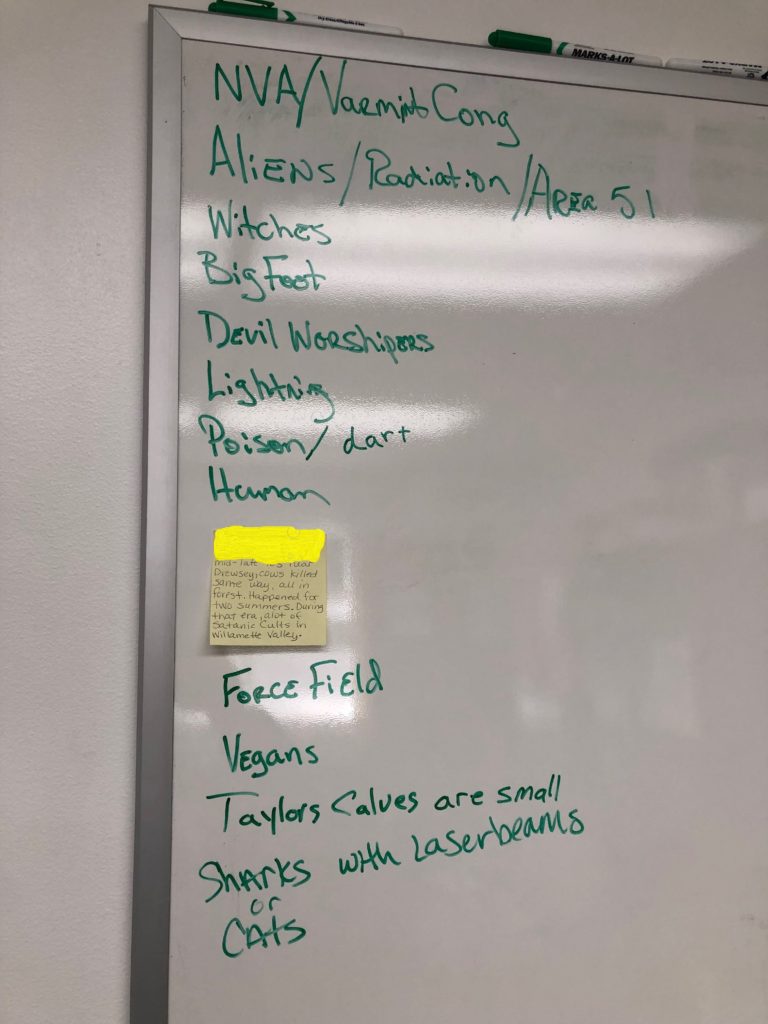
A whiteboard list tracks the theories called in to the Harney County Sheriff’s Office. Few clues have led to a lot of spectualion and guesses on how several bulls were mysteriously cut down this summer. (Note: The image has been edited to obscure personal information of someone who had called the sheriff’s office.) CREDIT: ANNA KING/N3
Jenkins says the cases have been tough, with little evidence and no credible leads. He personally inspected four of the animals. He has a running list on his white board scrawled with green marker with the top theories.
“Another one told us we should run like a Geiger counter type thing around the animal and guarantees that there would be radiation there,” Jenkins says. “And the number one on the list there, he thinks it’s the North Vietnamese army.”
Whatever or whoever the cause, what’s clear is it isn’t bears, wolves, cougars or poisonous plants. Nor were the animals shot.
The FBI won’t confirm or deny it’s looking into the killings.
Little Time To Dwell
Back on bull-breeder Terry Anderson’s spread near Pendleton, he’s got his solid-set sprinklers running now.
The spigots hiss and sputter, then click, click.
What happened to his mother cow decades ago, and these new cases, leaves him with an uneasy feeling.
“But you just go on,” Anderson says. “‘Cause the next day has a lot of projects to get done, too.”
Ranching, after all, leaves little time to dwell.
Related Stories:

Cody Easterday sentenced to 11 years in prison for cattle fraud scam
The sentence that came down for Cody Easterday Tuesday concludes one of the biggest cattle rustling cases in the history of the West.
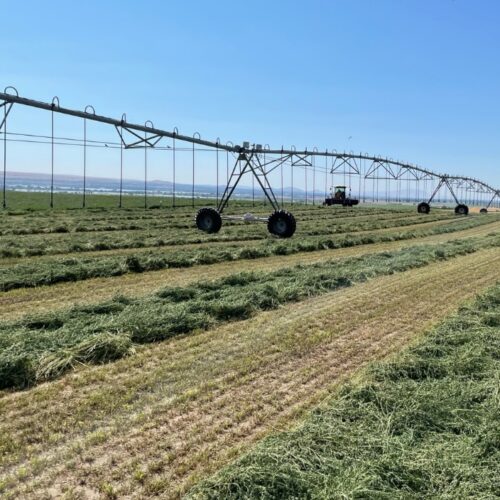
Western Ranchers Are Cuttin’ Herds Like Mad To Prep For A Winter With Short Hay
From Oregon to the Dakotas, hay stocks for hungry cattle are already low. On top of that, ranchers say summer pastures are dry from the widespread drought.
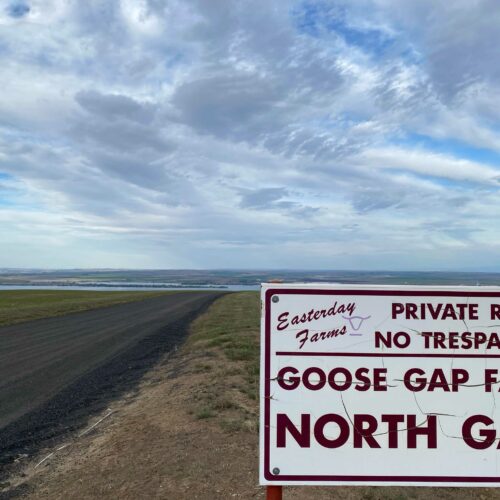
As Easterday Family Property Is Auctioned, Big-Time Buyers Attracted To Water-Rich Deal
Easterday Ranches and Easterday Farms has provided beef, potatoes, onions and produce to dinner tables for more than three generations. Now in bankruptcy, many of the family’s key properties will be sold to repay debts. It’s one of the largest sales of prime water-rich agricultural lands in the Columbia Basin in recent history.

